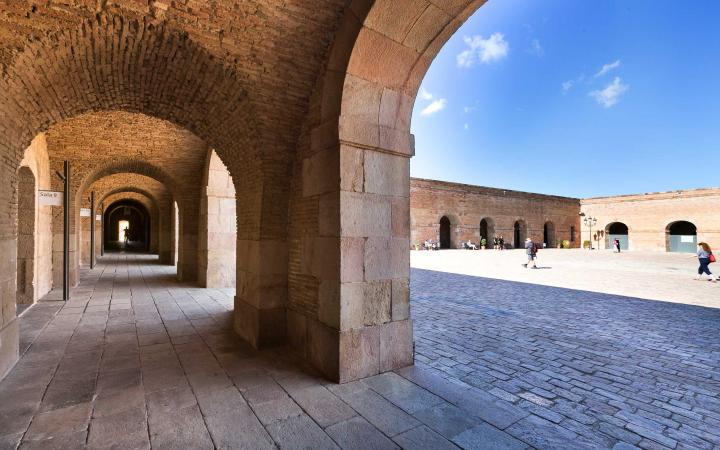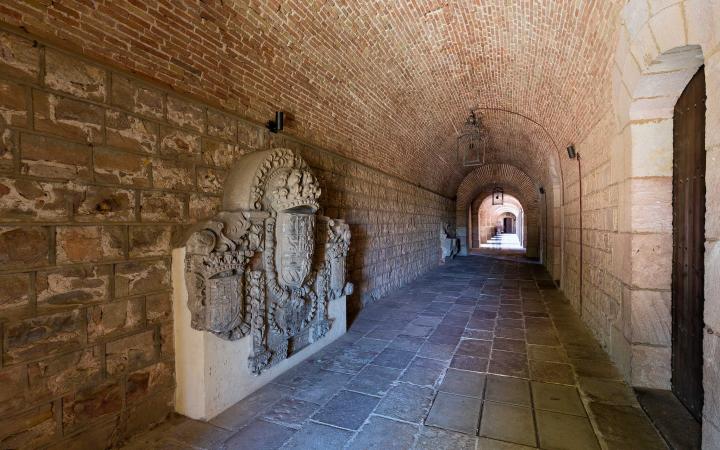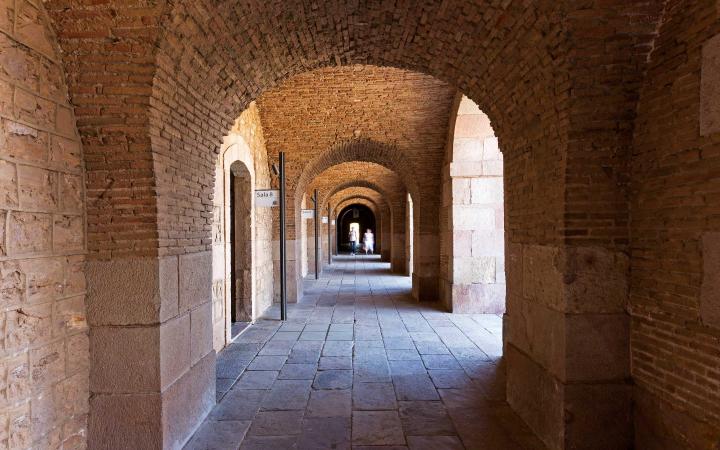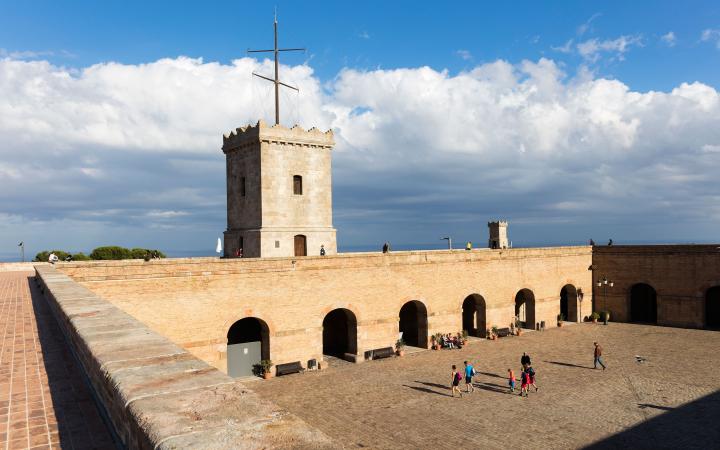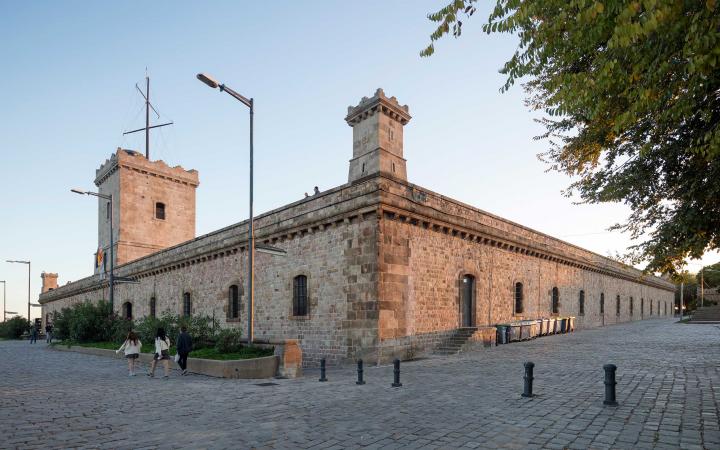There is a sentry box at each corner, while a cistern and the original dungeons are located on the seaward side. This was the heart of the castle, used for the administration, training and instruction of the troops. Furthermore, thanks to the adjoining roofs and the sloping pavement, rainwater could be collected there and channelled into the underground cistern.
The building that surrounds the parade ground, as it is today, was not part of the initial project designed by Cermeño, who had situated the living quarters and other facilities serving the garrison behind the curtain walls of the inner ward. The plans were modified and the result was the structure that still exists today.
The transfer of the military prison from the city to the castle led to changes in the use of some spaces in the fortress, such as the rooms around the parade ground, some of which was turned into prison cells. After the Spanish Civil War (1939), Montjuïc continued to function as a detention centre, this time for members of the Republican side. During the first few months it was used as internment camp for classifying republican prisoners, but it soon became exclusively a prison, and the quarters around the parade ground were prepared to hold the officers and leaders of the Republican side.
The president of the Catalan government, Lluís Companys, was imprisoned in the castle on 3 October 1940 and remained there until the fifteenth of the same month, when he was executed by firing squad in the Santa Eulàlia moat. During his internment, he was locked up in the military chaplain’s quarters, which had a table, a bed and a washbasin, and was similar to those reserved for the officers and NCOs. Witnesses say that the room is located on the left entering the courtyard, where there are four barred windows. The room where Companys was court-martialled is located in the wing by the hornwork, probably the former room 20 in the military museum.
The refurbishment of the rooms around the parade ground to convert them into the offices, service areas and exhibition halls of the military museum began in1960, and this was the last important renovation. The original finish on the facades and the arcades was stripped off and an equestrian statue of Franco was placed in the middle of the parade ground. This was not removed until the definite transfer of the castle to Barcelona City Council in 2007.
Four rooms around the parade ground now house the Montjuïc Castle Interpretation Centre. In the second room visitors can see a well-preserved section of one of the four demi-bastions that strengthened the defences at the corners of the original fort, built in 1640 in thirty days by a team of soldiers and civilians.


